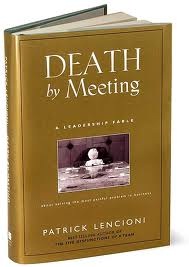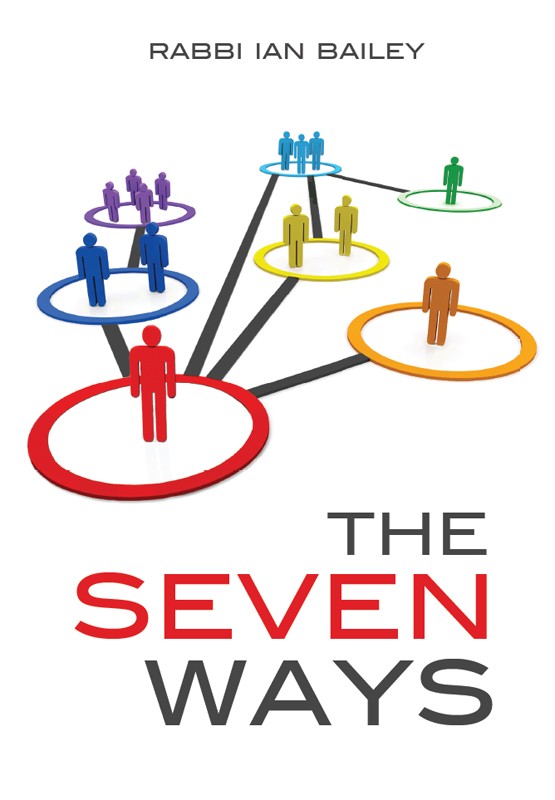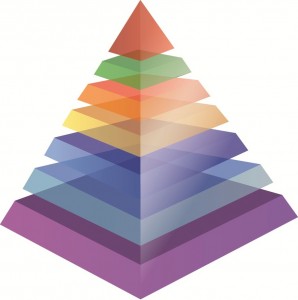Advanced Seven Ways: Why We All Hate Meetings So Much
PDF Vayeshev Why You Need a Time OutEverywhere you look, people are offering their services as professional consultants. There are consulting agencies, people with day jobs who moonlight as consultants, consultants for your business, to help you organize your home, deal with your children, train unruly pets and so on and so forth. There are just as many people advertizing themselves as consultants as there are advertizing as coaches! (I’m also ribbing myself here, I advertize as both 😉 ). Consultancy has become so prevalent that I noticed something very funny on a job application for an assistant manager position that a client of mine filled out several months ago. The form asked for the applicant’s most current or recent job category, and gave suggestions such as managerial, IT, retail sales and the like. One of the options that I had never seen before was ‘consultant’, as if the person who wrote the application knew full well that everyone checks that box when they have no work at that moment… er… I mean when they have a very unique and boutique consulting group that they manage in addition to their full-time coaching.
That having been said, this field that has exploded, and has given our modern companies new life and higher efficiency. The idea of utilizing a consultant has deep roots in the Torah. This taking a “time out” to review and retool an organization or group is indeed essential and has been performed skillfully by some of our leading biblical heroes; it is something that is intimately intertwined with the middah (idea/quality) of yesod and the great consultant and psychologist who is related to this middah: Yosef.
essential and has been performed skillfully by some of our leading biblical heroes; it is something that is intimately intertwined with the middah (idea/quality) of yesod and the great consultant and psychologist who is related to this middah: Yosef.
Keep them Separated
Yosef is called “N’zir Echav” “separate from his brothers” (Genesis 49:26; see Rashi and Targum Unkelos). As you draw themes in his actions, you see that this great leader is perpetually separate from the group that surrounds him (Egypt, his master’s house, his brothers) and, because of this, he better able to come in, as a type of consultant, to address concerns or bugs that have developed within the group (lack of food, lack of vision, lack of ability to forge relationships, lack of optimism). He dresses nicely, has a big vision, systematic plans and good interpersonal skills—very much like a coach or professional trainer or skilled executive. Yitro, the other biblical consultant, helps Moshe by coming in as an outsider to provide advice to a major problem in Israel’s judicial system. He uses “outside eyes” to see issues from a fresh new perspective. Yosef is hired by Pharaoh, on the spot, to be the executive vice president of the Egypt because of this executive-like skills and dynamic abilities.
Coincidental numbers?
In my study of business consulting, I came across a very good book which spot-on matches up with yesod ideas that I encountered in my personal research. In the book, seasoned management consultant Patrick Lencioni deals with how and when to run meetings so they are most effective. Offering innovative advice (he is a yesod–tiferet), he argues that organizations usually run terribly inefficient meetings that end up hurting their own cause. (The book is aptly entitled Death by Meeting). He offers advice that flies in the face of the way standard meetings are run.
 The main part of the Bay Area-based consultant’s advice is to run four types of meetings, with a unique daily checkin (5-10 min) meeting, which must be done with everyone standing up, so as not to drag it on to long; a weekly tactical meeting is advised (45-90 min), but the agenda must be made on the spot, rather than beforehand, to keep things moving along; a monthly meeting is advised with the emphasis on making decisions and not being afraid to lividly argue out issues, as coming to conclusions and utilizing conflict are important to effective meetings (this is a big theme of his. I urge the reader to buy this book as it is helpful in running a home or office properly. One can find it sold at a reduced rate on Amazon or the like. It’s a fun read, with an extended, humorous story to illustrate the ideas.) Third on the list are monthly meetings (2-4 hours), where you “Discuss, analyze, brainstorm and decide upon critical issues affecting long term success” and must “limit to one or two topics” “prepare and do research [beforehand and] engage in good conflict” (taken from the synopsis on his website).
The main part of the Bay Area-based consultant’s advice is to run four types of meetings, with a unique daily checkin (5-10 min) meeting, which must be done with everyone standing up, so as not to drag it on to long; a weekly tactical meeting is advised (45-90 min), but the agenda must be made on the spot, rather than beforehand, to keep things moving along; a monthly meeting is advised with the emphasis on making decisions and not being afraid to lividly argue out issues, as coming to conclusions and utilizing conflict are important to effective meetings (this is a big theme of his. I urge the reader to buy this book as it is helpful in running a home or office properly. One can find it sold at a reduced rate on Amazon or the like. It’s a fun read, with an extended, humorous story to illustrate the ideas.) Third on the list are monthly meetings (2-4 hours), where you “Discuss, analyze, brainstorm and decide upon critical issues affecting long term success” and must “limit to one or two topics” “prepare and do research [beforehand and] engage in good conflict” (taken from the synopsis on his website).
In line with today’s office-oriented industries, Lencioni also recommends that company executives or directors do regular offsite meetings to evaluate the company with “outside eyes”. A Different environment and fresh atmosphere creates a tone and headspace that is meant to mirror (but not necessarily replace) the outside vision that a consultant would have. Lencioni recommends around 4-8 days a year. Once you start to add up the number of cumulative hours that he recommends, the resultant percentage brings us to a significant yesod number.
In my population survey and repeated personal observation, (which you can read about if you order the Seven Ways book) I noticed that yesods consistently make up just over 3% of a given organization. Let’s run the numbers and then bring out the significance in the correlation between the two topics. If, according to the Death by Meeting model, daily meetings run 10 minutes long and weekly meetings are an hour and ten minutes, you will end up with 120 minutes per week spent on meetings, which is 2 hours. If a person works 60 hours a week, this will be 3.3% of the week spent on yesod time, or “time out” from the hustle and bustle of normal work to retool and plan. If someone works 240 hours per month and does 9 hours of cumulative daily, weekly, and month meetings, they will be spending 3.75% in time outs. Let’s multiply 9 hours by 12 months to get 4.5 days and add 7.5 days for quarterly offsite meetings. You will get 12 days, which is 3.2% of the year.
spent on yesod time, or “time out” from the hustle and bustle of normal work to retool and plan. If someone works 240 hours per month and does 9 hours of cumulative daily, weekly, and month meetings, they will be spending 3.75% in time outs. Let’s multiply 9 hours by 12 months to get 4.5 days and add 7.5 days for quarterly offsite meetings. You will get 12 days, which is 3.2% of the year.
This number hovers around the number I found for the prevalence of yesod-types in my population survey and efficiency estimation for organizations. The number relates to two levels of insight. First of all, at any given time, it is important to get input from each of the seven different personality types and their respective messages. Any given issue, when frozen and dissected, needs input from all angles. A brainstorming session can benefit, for example, from a hod-type being concerned with the emotional impact that the product or program will have on the buyer or recipient, and a netzach-type is likely to want to carefully, logically weigh the different aspects of a plan or dissect whether he or she thinks the product is appropriate, from an ethical standpoint. Yesods or people who utilize yesod thinking are able to add very innovative ideas that change or challenge the status quo; it is extremely easy for them to point out clear flaws in a given organization (as Yosef did with his brother’s behavior, see Gen. 37:2 with commentaries).
On a second level, the seven middot are in a specific sequence that is in a meaningful order. At the very beginning of the sequence are chesed and gevurah. Avraham and Yitzchak relate to these two middot/sefirot, respectively. Just as Avraham structured the Hebrew people’s existence and plan, and Yitzchak went to great lengths to maintain it, the sequence of chesed–gevurah mirrors developmental stages in an organization. It parallels the creation of an organization and its standardization, as well as the ongoing urge that groups sociologically, as a whole, have to maintain the status quo and guard it from change. The yesod stage, which comes later as the sixth stage, is the stage for retooling the organization. This parallels what Lencioni is trying to get across and the services that consultants are attempting to provide: intermittently, but not constantly, retooling is necessary for the health of any organization. Whether it be the 3% of yesods in an organization or the 3% of time organizations need to rethink their vision and efficiency, yesod must be present, but it must not be the standard.
stage, is the stage for retooling the organization. This parallels what Lencioni is trying to get across and the services that consultants are attempting to provide: intermittently, but not constantly, retooling is necessary for the health of any organization. Whether it be the 3% of yesods in an organization or the 3% of time organizations need to rethink their vision and efficiency, yesod must be present, but it must not be the standard.
This trichotomy is clearly embedded in Lencioni’s model. He doesn’t like executives or organizations getting bogged down by too much planning during meetings or too much thinking and dragging of heels. He encourages any given group to argue and fight out issues in order to get to the best understanding of those issues that the group can find. Then decide. Just decide and go to work. Time the meetings, make strict guidelines, hash it out and decide. Work is for research and working, meetings are for key communication that can’t be done separately. Anyone who has had the “pleasure” of sitting at a very long bored…sorry board meeting at work or a non-profit will have experientially understood this. Far too much time is wasted, far too many generic opinions are allowed to rant on and far too much repeated information wastes time, energy and gives people headaches.
The Chesed-Gevurah Yesod Model
The key is to know how to balance the status quo with change. I think that it is very important for advocates on both sides of the fence to acknowledge that the other is necessary to both organizational health, product development, and sales. Far too often people take one side or the other. Both are key tools in keeping the home or workplace to become a stable environment and to be able to work on potentially destructive glitches that crop up within the group. Most of the time, organizations must sustain the status quo in order to maintain continuity and sustainability. However, daily, weekly, monthly, quarterly and possibly yearly time outs must be taken in order to retool and make sure that the system is functioning or whether it needs to be changed. In addition, and important to yesods and big thinkers, when people actually see the need for change or dynamic advice (a la Pharaoh), then innovative thinking in welcomed and can be implemented.
The Torah
The tension between Yosef and his brothers is centered on whether innovative and interactive means should be used to support and develop Israel or whether those means are dangerous to the fragile underpinnings of a band of religious men. The key, it seems, is to balance the two sides. If someone has big ideas, he or she should hold back and wait until the time is right to reveal them. If someone likes the status quo and abhors or is nervous about change, he or she should learn that, periodically, change and revamping is essential.
It takes the right time out to plan such time outs. May we all have enough time out to plan to take a time out and then take it.
IB The Seven Ways is available for sale here; email Rabbi Bailey here to get a coupon code (as always, no spam or solicitations will follow).